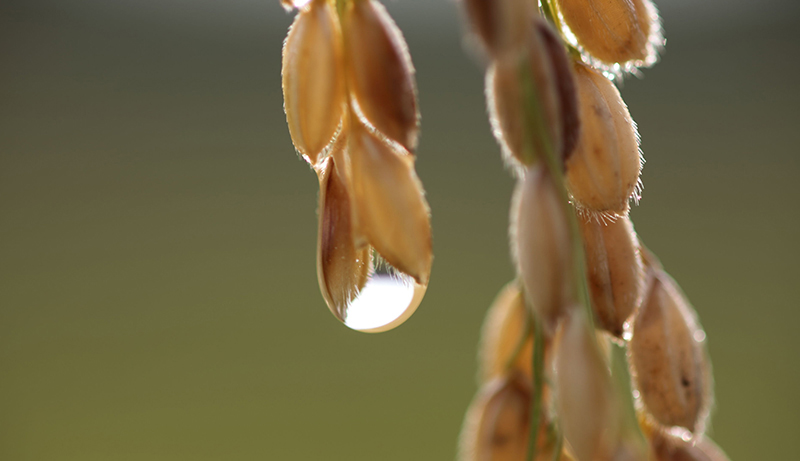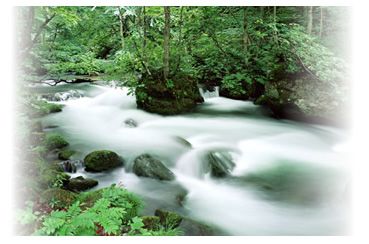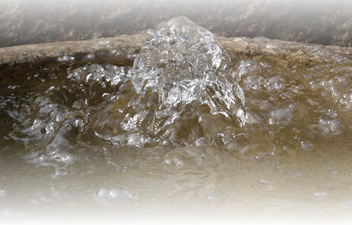RICE


Perhaps the most obvious ingredient for making sake, good rice appropriately prepared is indeed a key in sake brewing. In order to create sakes with a pleasant fragrance, good taste and clear appearance, it is necessary to use polished rice. Generally speaking, the more that the rice is polished, the better the rice becomes for brewing. Although sake can be brewed with any kind of rice, the best sake is produced from japonica (short or medium grain) rice. For producing top class sakes such as ginjo and daiginjo types, it is further preferred to use premium rice developed for sake brewing known as sakamai.
• Polished Rice
To create polished rice (also known as white rice), the hard outer bran layer (which contains fiber, minerals and vitamins) and the germ (the so called nourishment supply for the rice kernel containing antioxidants and vitamins) must be removed from brown rice. Brown rice, also known as hulled rice or genmai, is rice which has had its outer husk removed and has either not been milled or only partially milled. This rice contains an abundant supply of protein, fat and vitamins, all of which are nutritious for human consumption but not conducive in large amounts to the production of delicious sake. As the outer layers are removed, the starch core becomes more accessible which makes it easier for fermentation to take place.
Most sakes are made from rice which has a polishing ratio of at least 75% meaning that at least 25% has been milled away. To compare with regular white table rice used for cooking, the polishing ratio is typically 90-92% meaning that only 8-10% has been milled away. The premium sake varieties Daiginjo, Ginjo, and Honjozo, have even stricter rice polishing ratios which are prescribed in the rules for the "Specially Designated Sake Types."
The benefits of rice polishing, however, have their limits. If rice is polished to 35% and under, the positive effect to the remaining starch core becomes insignificant since the taste of the sake cannot be improved and the cost of production increases significantly.


At Hakushika, we are very particular about rice polishing standards and do all of the polishing ourselves at our Rokko Brewery. The way we polish rice is dependant upon the rice variety as well as the water content within the rice kernels. New crop rice, for example, contains more moisture than rice which has been stored for some time. We take meticulous care to tailor the polish process to match the quality of the rice to the final product specifications.
• Rice Varieties


The best sakes are produced with japonica (short and medium grain) rice. This kind of rice is rounder than long-grain rice and has a relatively plump starch core within the rice kernel. In general, the rounder and richer the starch core is, the easier it is to ferment the rice to produce sake.
At Hakushika, we use both premium sake brewing rice (sakamai) as well as standard table rice. We match the appropriate rice to the appropriate sake variety and purchase both locally-produced rice as well as rice from around the country as far north as Hokkaido to as far south as Yamaguchi Prefecture.
The "king" of all sakamai is Yamadanishiki. Although produced throughout Japan, our locally-grown Yamadanishiki produced in Hyogo Prefecture is reputed to be the best. Hyogo Prefecture's climate and soil quality is perfect for growing Yamadanishiki and is the country's largest producer representing approximately 80 percent of Japan's total production. Yamadanishiki was specially developed in the early 1900s and contains a starch-rich core and only a small amount of protein and fat which is perfectly suited for effective fermentation.
KOJI RICE


Koji rice is made by inoculating steamed rice with koji kin (Aspergillus oryzae), a type of mold that is produced from rice. Koji rice has a similar function to malt in beer making in that the koji rice is responsible for creating the enzymes that break down the starch in the rice into the sugars necessary for fermentation which can take place once that yeast is added. At Hakushika, we use a special, powder-like koji kin which may be effectively sprinkled on steamed rice and used to propagate high quality koji rice suitable for effective fermentation.
WATER


The ingredient used in the greatest amount when making sake, water, is important not only in the fermentation stage but also in the final stages when water is added to adjust alcoholic strength.
• Water for brewing “Miyamizu”

Nishinomiya, the place where Hakushika Sake has been brewed since 1662, is most famous for one of Japan's top quality waters for brewing, "miyamizu." Miyamizu, which literally means "heavenly water," is created by the underground water that flows from the Rokko Mountains and mixes with underground water from the Shukugawa River and sea water from Nishinomiya Bay. The resulting water is rich in phosphates, carbonates and potassium, has just the appropriate level of sodium, and only trace amounts of iron, the mineral best avoided in sake brewing since it can create off-flavors.

• Water for water addition
Water that is condusive for fermentation is not necessarily the preferred water for the water addition necessary for adjusting the final alcoholic strength. At Hakushika, we utilize highly treated water which has been processed non-chemically to remove iron and off odors. Since the best water for using in the final product of sake is clear and odorless we make a special effort to ensure that the water we use in our final product is of the highest standard of purity.
BREWER’S ALCOHOL
Although not used when making Junmai sakes, brewer's alcohol is used in making Japan's most popular sake variety, futsushu, as well as the premium Honjozo varieties. In times when rice was scarce, inferior sakes were made by large alcohol additions but today, added alcohol is used mainly to adjust and enhance flavor.
Brewer's alcohol is alcohol which has been distilled from sugar-containing sources or starches such as sugarcane, sugar beet, rice potato, corn or molasses. When brewer's alcohol is added in the appropriate amounts to the moromi (main fermentation mash stage) stage, the fermentation results in a fragrant, smooth and refreshing sake.
